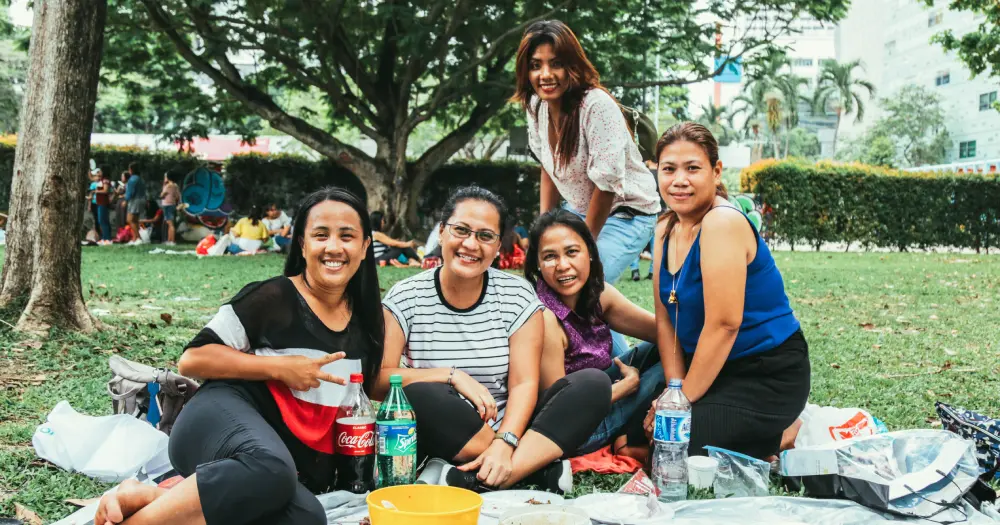4 minutes read
Introduction
Exploring the challenge of cervical cancer prevention reveals a persistent global issue that demands immediate attention. The World Health Organization’s (WHO) reports from 2020 indicate that approximately 604,000 women worldwide were diagnosed with cervical cancer that year, resulting in a tragic loss of around 342,000 lives.
Among the vulnerable groups disproportionately affected by cervical cancer are Female Foreign Domestic Workers (F-FDWs). These women require a systematic continuum of care spanning awareness, screenings, diagnosis, and treatment. Crucially, the vaccination against Human Papillomavirus (HPV) stands out as a powerful preventive measure. However, the efficacy of this continuum is compromised for migrant domestic workers due to disparities in healthcare access. Global deficiencies within the vaccination distribution framework expose the glaring inequities in healthcare access across regions. Consequently, the existing imbalance warrants an in-depth examination of mobile populations, specifically migrant workers, who encounter additional obstacles in obtaining essential healthcare access. For F-FDWs, the battle against cervical cancer becomes particularly critical due to the unique challenges they encounter when attempting to access healthcare services.
To address these issues, a collaborative effort between AVPN, MSD, National University of Singapore, Asia Pacific Immunization Coalition (APIC), and The Voices Project Asia has culminated in a policy paper aimed at enhancing outcomes in the screening, prevention, and treatment of cervical cancer for F-FDWs hailing from the Philippines and Indonesia, both prior to their departure and during their time in host countries.
The Intervention Process in Three Phases:
Efforts to combat cervical cancer encompass three pivotal stages: Prevention (through vaccination), Detection (via screening), and Treatment. Focusing on each stage is pivotal in effectively addressing this disease.
In 2018, WHO Director General Dr. Tedros Adhanom Ghebreyesus garnered support from 131 countries by issuing a call to action for the elimination of cervical cancer, emphasising the gravity of the situation. A comprehensive strategy to eliminate this disease has been set forth by the WHO, with specific targets and initiatives.
The WHO’s strategy for eliminating cervical cancer hinges on three fundamental pillars and corresponding targets:
- Vaccination: Ensuring 90% of girls receive complete HPV vaccinations by the age of 15, with a recommendation to include boys as well.
- Screening: Aiming for 70% of women to undergo high-performance screening tests by the age of 35 and again by the age of 45.
- Treatment: Striving to treat 90% of women with precancer and manage 90% of women with invasive cancer.
Obstacles Confronting F-FDWs
Numerous challenges impede the success of vaccination and screening initiatives for F-FDWs. These hurdles include limited access to information, cultural stigmas related to reproductive health, and concerns regarding the financial implications of cancer treatment.
Addressing Factors Hindering Prevention, Screening, and Treatment
To overcome these challenges, a strategic approach must be taken to address the underlying factors affecting F-FDWs.
Primarily, insufficient awareness and limited access to information about cervical cancer screening and prevention programs create barriers to early detection. Existing approaches have failed to effectively reach F-FDWs, either in their host or home countries, contributing to a lack of awareness regarding HPV-related diseases and cervical cancer.
Educational campaigns and community outreach are imperative to increase awareness and encourage regular engagement with preventive and screening services. Moreover, public health campaigns must be tailored to penetrate F-FDWs’ transnational digital spaces, delivering actionable and contextually relevant information across various host countries and territories.
Economic constraints also hinder F-FDWs from seeking timely preventive measures or treatment. The burden of financial responsibility, often borne by employers, deters F-FDWs. It is crucial to establish pathways that ensure access to care with financial support independent of employers, which will mitigate financial barriers.
Cultural norms and linguistic barriers further complicate reproductive health discussions and cervical cancer prevention efforts. The lack of effective communication between F-FDWs and healthcare providers impedes health promotion initiatives, including screening and vaccination campaigns. To overcome these barriers, culturally sensitive communication, education, and targeted campaigns are essential.
Disparities in healthcare infrastructure impede access to quality screening and treatment facilities. In home countries, limitations in sexual and reproductive healthcare resources hinder access to services, while in host countries, migrant workers encounter structural barriers to obtaining adequate care. Addressing these gaps necessitates investment in healthcare facilities, healthcare professional training, and collaboration between host and home countries.
By addressing these factors collectively, a more comprehensive and equitable approach to cervical cancer prevention, early detection, and treatment can be developed, ultimately reducing its prevalence and impact.
Conclusion
The battle against cervical cancer is not insurmountable. The WHO’s global strategy provides a blueprint for its elimination. However, tailored solutions are vital to address the distinctive challenges faced by F-FDWs, who are disproportionately at risk. Through strategic investments and the implementation of policy recommendations, we can bridge the gap and make substantial progress in preventing cervical cancer within this vulnerable population. This effort also contributes to the broader goal of mitigating healthcare disparities.
For detailed insights, consult the policy paper on HPV and Cervical Cancer Prevention, Screening, and Treatment for F-FDWs. Stay informed and engaged with this critical issue.


















